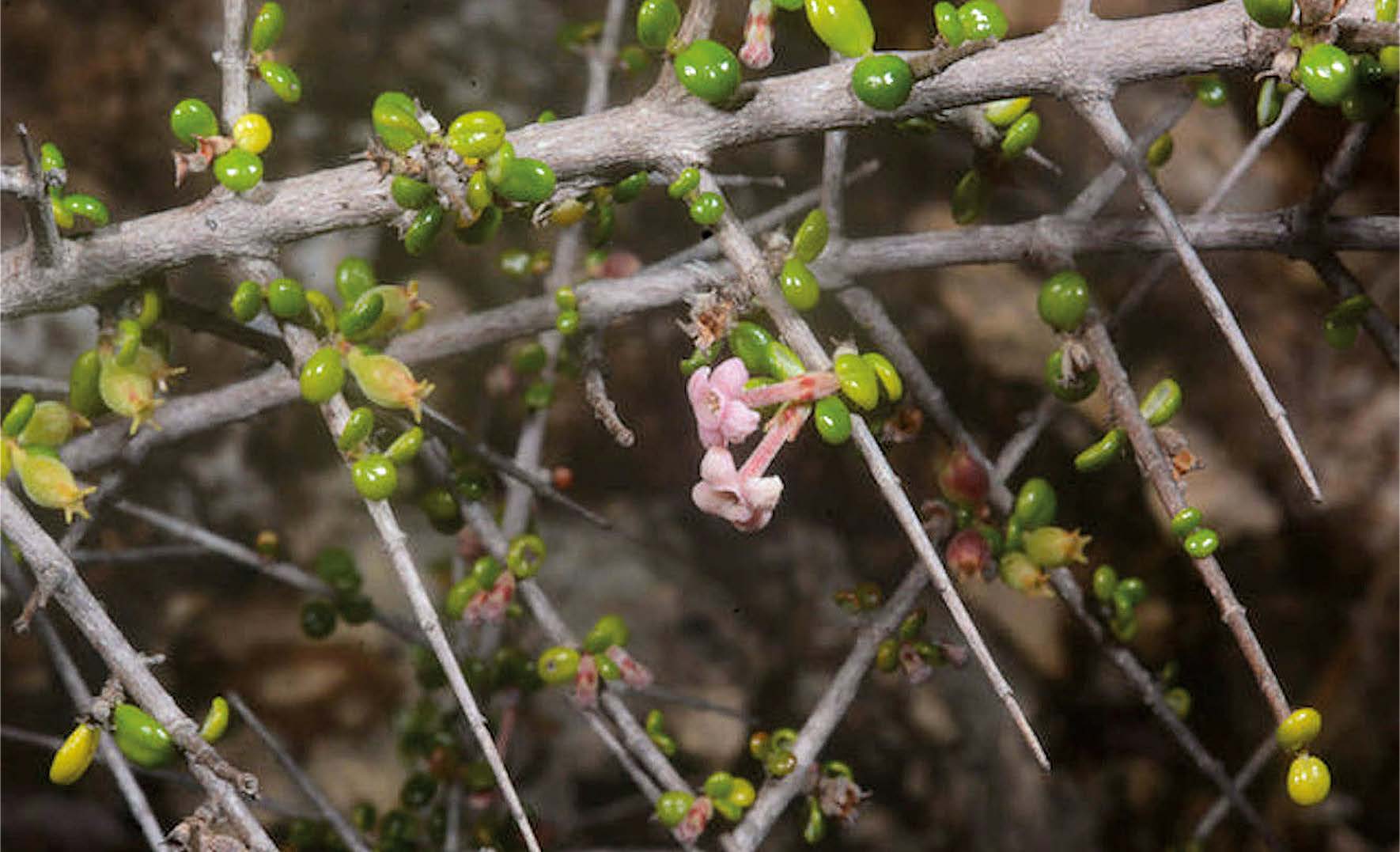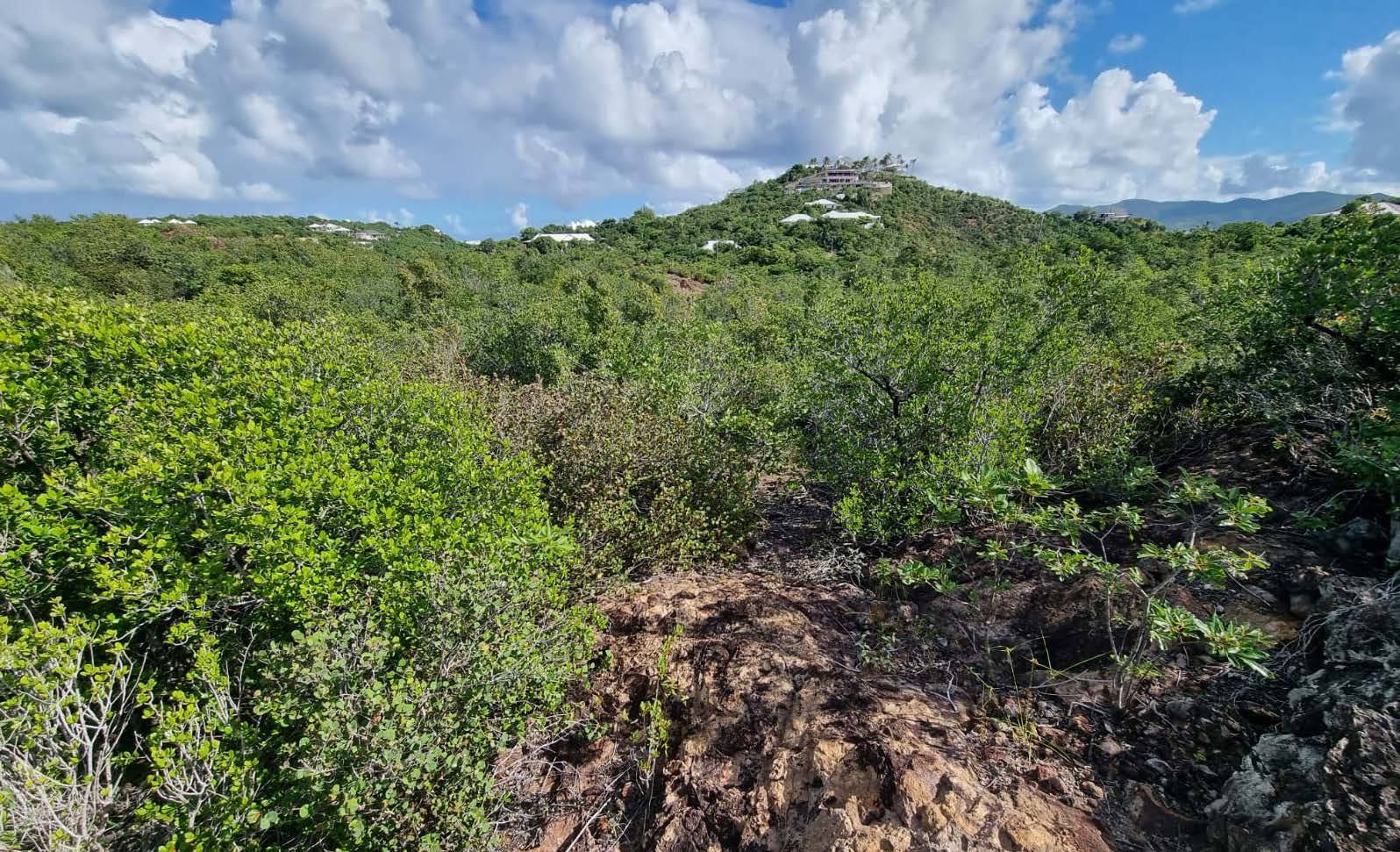Interesting discoveries in the Lowlands
On December 2, 2022, in the presence of expert Puerto Rican biologist Franklin Axelrod, Julien Chalifour went to the Lowlands to explore an undeveloped tract of land. Identified by the naturalist association, Bivouac, during their Insularis 1 expedition, this site has been of interest for the plants found there, as well as for its herpetofauna. This visit revealed a wide diversity of plants endemic to the Anguilla Bank, or strictly to Saint Martin, all of which are protected. The relief and geological formations unique to our island lead one to believe that they are at the root of this biodiversity, a fact confirmed by geology expert Denis Vaslet, during a visit to Saint Martin. In addition to noting Melocactus intortus (Turk’s head cactus) and orchids, the two scientists also observed a Merisier de Boldingh or Myrcia boldinghii, a very rare endemic shrub, known via specimens used to create its description and not seen again since its discovery in 1908. The scientists also found a species they thought was strictly endemic to Anguilla: Rondeletia anguilensis, a species of plants in the Rubiaceae family. The scientific department from the management association of Réserve naturelle (AGRNSM) sent a technical note to the attention of the DEAL (Direction of Environment) and urbanism services of the Collectivité on the challenges facing the conservation of these species and this piece of land. The geological diagnostic did not simply confirm the exceptional nature of the rocks and the soil on this land, but also its unique character in Saint Martin. These types of rocks are not found anyplace else on the island— rocks rich in limestone— as well as a scarcity of soil, which lends itself to the development of the orchids observed here.


















